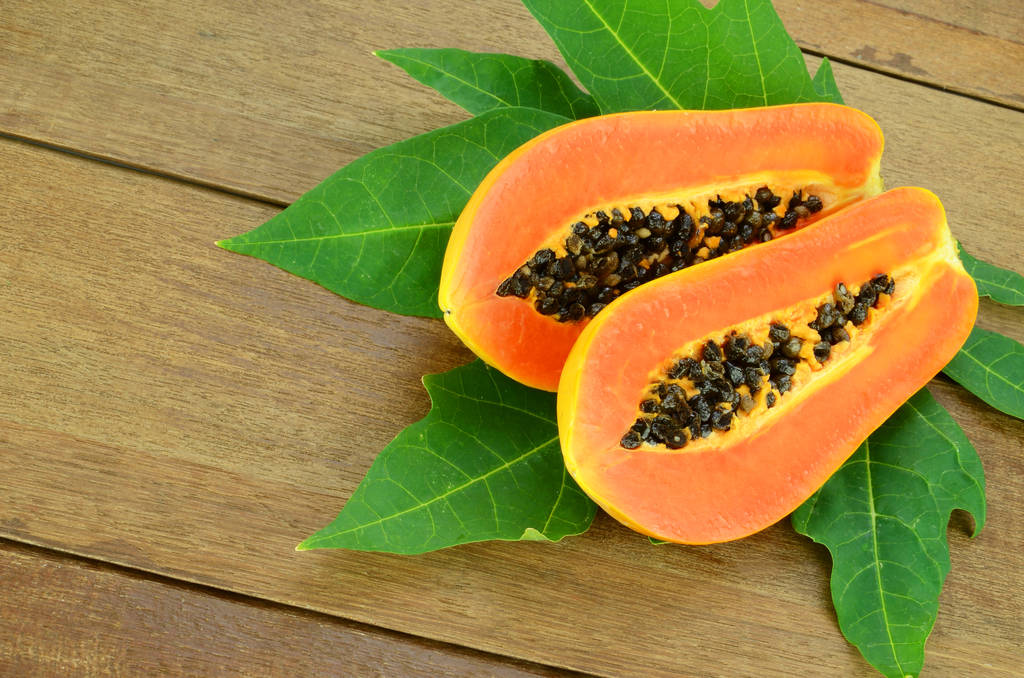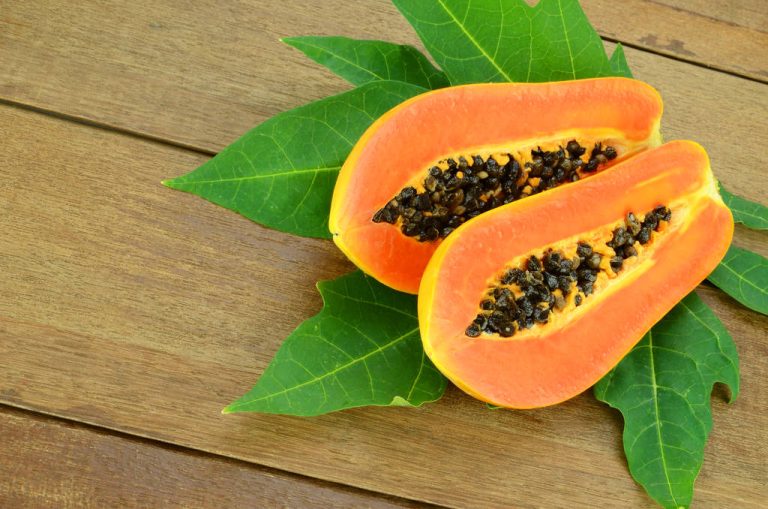You can easily recycle papaya seeds. They are not garbage, but contain healthy nutrients for your body. We’ll show you two simple ideas on how to use papaya seeds.

Papaya seeds: health effects and nutrients
Cut open papaya, scrape out seeds and then throw away? It doesn’t have to be. If you buy a fruit that has been transported as long as the papaya, you should also use it completely. The good thing: there are a lot of valuable nutrients in the seeds.
Papayas are best known for the enzyme papain they contain. This ingredient is said to have anti-inflammatory and digestive properties and prevent thrombosis. However, there is hardly any papain in the pulp. You can find the enzyme mainly in the unripe peel and in the papaya seeds. Since the shell is hardly edible, the seeds are the ideal source of papain.
In addition to papain, papaya seeds contain other important ingredients that are said to have the following effects
Mustard oils: have an antibacterial effect and promote blood circulation.
Carpain: Good for platelets.
Oleic acid and palmitic acid: protect the natural skin barrier and provide energy.
Flavonoids: Are among the antioxidants and support the immune system.
Papaya seeds as a pepper substitute
Papaya seeds are characterized by their mild heat. Therefore, they are ideal for seasoning any dish. This is how you can make the healthy pepper substitute yourself:
Cut the papaya lengthwise.
Use a spoon to remove the seeds from both halves of the papaya. Then pour them into a sieve.
Let some water flow over the seeds and gently rub off the pulp.
Then dry the seeds with a kitchen towel. This will also loosen the remaining pulp.
Now you have to dry the papaya seeds. There are various possibilities.
For example, you can use the residual heat of your oven after you have prepared something in the oven. Spread the seeds out on a baking sheet and let them dry in the switched-off oven until cool.
In summer you can also take advantage of the warmth of the sun. To do this, spread the kernels on a large plate and place them in the sun. You leave the seeds there until they have dried.
You can easily fill the dried papaya seeds into a conventional pepper mill. There they are ground up and you can use them for seasoning.
Tip: You can also eat the papaya seeds fresh. All you have to do is remove the seeds from the fruit and chew them in your mouth. If you do this regularly, the seeds can develop their full potential.
Papaya seeds for your own cultivation
Papaya seeds are also suitable as seeds to grow your own papayas. How to grow your own papaya plant:
Halve the papaya and scoop out the seeds with a spoon.
Put the seeds in a sieve, rinse them with water and remove the pulp.
The nuclei are surrounded by a barely visible shell. The best way to remove these is to rub the seeds lightly with a kitchen towel.
Now all you have to do is sow the seeds. You should use soil that is as poor in nutrients as possible. In this way, the plant does not grow too quickly, but forms deep and well-branched roots. Also, you should rather grow papayas as houseplants since they cannot survive outside all year round.
The germination phase of the papaya begins in the next two weeks. Here it is crucial that you always keep the soil moist, but not too wet.
After the germination phase, you should also keep the plants moist and place them in a warm, sunny spot. In summer you can also put them in the garden or on the balcony. In winter, the plant should be placed in a sunny place indoors, as it is used to high temperatures.
As soon as the plant bears ripe fruit, you can enjoy the sweet pulp and recycle the seeds.
cutting papaya
Halve the papaya and remove the seeds with a spoon. Then peel the papaya halves thinly with a vegetable peeler or sharp paring knife. Then you can dice the papaya or cut it into strips.
Problematic life cycle assessment of papayas
Danger:
You should not buy papayas in abundance. The exotic fruits only grow in tropical and subtropical regions such as Australia, South America or Africa. According to this, papayas have been transported long distances or are cultivated in greenhouses at great expense. In order to keep your carbon footprint low, you should use papayas sparingly.
Pesticides are often used when growing papayas. These can damage both the environment and health. Therefore, preferably buy organic fruit.






